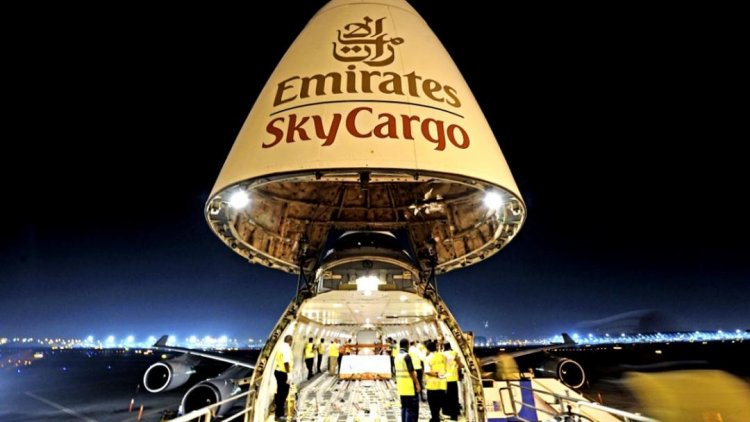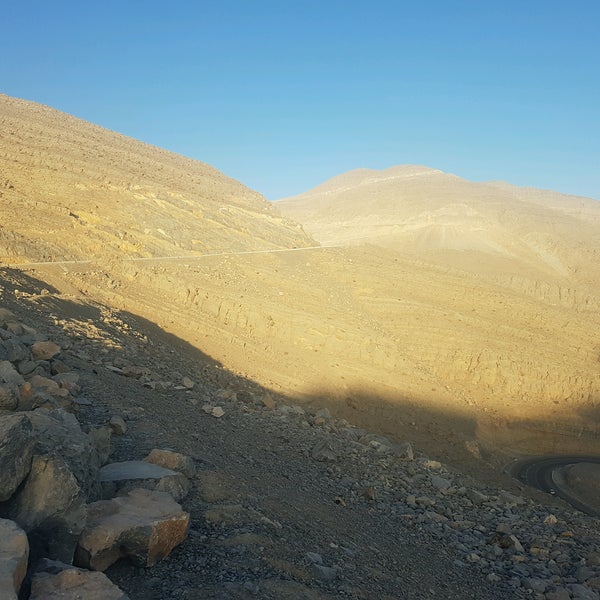The United Arab Emirates is a Middle Eastern country that is located on the Arabian Peninsula's southeast end and is bordered by Saudi Arabia to the south and Oman to the east. The country also shares its maritime borders with Iran and Qatar. The population of UAE was 9.2 million in 2013 of which only 1.4 million were native Emiratis and the rest all expatriates.
The UAE is a federation of 7 emirates that was established on December 2, 1971. The biggest city in UAE, Dubai, is a global city and a major international aviation hub. UAE's economy is mainly reliant on the export of oil and natural gas. UAE's economy is mainly reliant on the export of oil and natural gas. One of most well-known tourist destinations in the world, Dubai is the biggest city of UAE. The city is based on the Persian Gulf's southeast coast and serves as the capital city of the Emirate of Dubai.
Dubai has emerged as one of the biggest cosmopolitan cities of the world and the business hub of the Middle East. The city is famous for its ambitious constructional projects like the Palm Islands and " The World" which are artificial islands off the coast of Dubai. Dubai's economy is mainly dependent on international trade and to a small extent on oil that is a limited resource in the city. Tourism, real estate, aviation, and financial services are also major sources of revenue in Dubai.
The city is the world's 22nd most expensive city and the most expensive one in the region. In 2014, the hotel rooms in Dubai were ranked as the second most in the world after those in Geneva. United Arab Emirates is a country in Western Asia, borders with Oman and Saudi Arabia, while having maritime borders in the Persian Gulf with Qatar and Iran.
Which Is The Largest Emirate In UAE Islam is the official religion and Arabic is the official language. The government purely runs on the wealth of oil and corporate tax which was introduced in 2018, there is no income tax for the citizens and immigrant workers in UAE. As on 2020 UN estimates, Immigrants take up to 88% of the total UAE population.
Abu Dhabi is the seat of federal government and the country's capital, and haven for some of the world's biggest oil-producing companies and most luxurious hotels and sporting facilities. Neighbouring Dubai, which is significantly smaller in size than Abu Dhabi, is considered the country's commercial capital, hosting numerous blue chip companies that have set up their regional headquarters there over the years. Sharjah is acknowledged as the country's cultural capital with its numerous museums and heritage sites; the emirate likewise has an attractive coastline, which is home to several resort hotels.
Ajman, which lies next to Sharjah, is the smallest emirate in terms of geographical territory, while Umm Al Quwain is situated between Sharjah to the southeast and Ras Al Khaimah to the northeast, along the coast of the Arabian Gulf. Unlike the other emirates, Fujairah is nestled by rough mountains and a 90 kilometre coastline . Ras Al Khaimah, on the other hand, is endowed with scenic coasts, mountains, archaeological sites and agricultural lands. The United Arab Emirates is a country that is made up of seven emirates. Those are Abu Dhabi, Dubai, Sharjah, Ajman, Fujairah, Ras al-Khaimah, and Umm al-Qaiwain.
While the country as a whole has a prime minister and federal president, each emirate has its own ruler that oversees the local governments. The UAE was established in 1971, and since that time, it has seen great population growth. Its largest city is Dubai, which has reached the one million resident milestone with a population of 1.1 million. However, there are other cities within the UAE that have high population counts. The second most populous city, Abu Dhabi, has over 600,000 residents.
There are four additional cities with populations that have surpassed 100,000. Seven cities have populations that are between 10,000 and 100,000, while remaining cities and towns make up the remainder of the population. The UAE has developed from a juxtaposition of Bedouin tribes to one of the world's most wealthy states in only about 50 years. Between 2000 and 2018, average real gross domestic product growth was at close to 4%. It is the second largest economy in the GCC , with a nominal gross domestic product of US$414.2 billion, and a real GDP of 392.8 billion constant 2010 USD in 2018. Since its independence in 1971, the UAE's economy has grown by nearly 231 times to 1.45 trillion AED in 2013.
The non-oil trade has grown to 1.2 trillion AED, a growth by around 28 times from 1981 to 2012. Backed by the world's seventh-largest oil deposits, and thanks to considerate investments combined with decided economic liberalism and firm Government control, the UAE has seen their real GDP more than triple in the last four decades. Nowadays the UAE is one of the world's richest countries, with GDP per capita almost 80% higher than OECD average. The United Arab Emirates' oil and natural gas reserves are the world's sixth and seventh-largest, respectively. Zayed bin Sultan Al Nahyan, ruler of Abu Dhabi and the country's first president, oversaw the development of the Emirates by investing oil revenues into healthcare, education, and infrastructure.
The United Arab Emirates has the most diversified economy among the members of the Gulf Cooperation Council. In the 21st century, the country has become less reliant on oil and gas, and is economically focusing on tourism and business. The government does not levy income tax, although there is a corporate tax in place and a 5% value-added tax was established in 2018. UAE's economy has grown steadily in the last 50 years since its independence.
The economic growth is attributed to oil the industry, foreign investments and economic diversification. In 2018, the oil and gas sector contributed 26 per cent to the overall GDP and the rest was from wholesale and retail trade, financial and insurance, construction and building, tourism among others. Abu Dhabi, the capital, is the centre of industry, commerce, and major cultures, which accounts for nearly two-thirds of the UAE's economy.
Abu Dhabi, the capital of the Emirate of Abu Dhabi, is UAE's second most populous city. Abu Dhabi houses the Abu Dhabi Emiri Family and the federal government offices of the region. The city is a modern metropolis and a major political, economic, cultural, and commercial center in the region. Like Dubai, Abu Dhabi also has a multicultural and diverse society.
However, time and again, human rights organizations have heavily criticized the government for exploiting foreign workers and treating them in an improper manner. Human occupation has been traced back to the emergence of anatomically modern humans from Africa some 124,000 BCE through finds at the Faya-2 site in Mleiha, Sharjah. Burial sites dating back to the Neolithic Age and the Bronze Age include the oldest known such inland site at Jebel Buhais. Known as Magan to the Sumerians, the area was home to a prosperous Bronze Age trading culture during the Umm Al Nar period which traded between the Indus Valley, Bahrain and Mesopotamia as well as Iran, Bactria and the Levant.
The ensuing Wadi Suq period and three Iron Ages saw the emergence of nomadism as well as the development of water management and irrigation systems supporting human settlement in both the coast and interior. The Islamic age of the UAE dates back to the expulsion of the Sasanians and the subsequent Battle of Dibba. The UAE' history of trade led to the emergence of Julfar, in the present-day emirate of Ras Al Khaimah, as a regional trading and maritime hub in the area. The maritime dominance of the Arabian Gulf by Emirati traders led to conflicts with European powers, including the Portuguese Empire and the British Empire. The United Arab Emirates has the world's sixth largest proven oil reserves and the fifth largest natural gas reserves, making the country a critical partner and responsible supplier in global energy markets.
Although a mainstay in the economy, oil exports actually account for only about one third of economic activity, as a result of aggressive government policies designed to diversify the UAE economy. However, domestic energy consumption has continued to rise steadily with all electricity production and water desalination being generated by thermal plants, which has resulted in the UAE becoming a net importer of natural gas since 2008. The United Arab Emirates , a loose Federation of seven separate emirates, was \founded in 1971. The UAE has a stable political system consisting of a central federal government, and the governments of the seven emirates. While there have been talks of steps towards democratic government, nothing concrete has emerged to date. A high degree of political and economic power resides in the individual emirates; Dubai, \Abu Dhabi, Sharjah, Ajman, Umm Al Qaiwain, Fujairah and Ras Al Khaimah.
Under the UAE constitution, each ruler retains control over natural resources, including oil, within his \emirate, and regulates commercial activity. Because hydrocarbon reserves, and thus revenues, are not equally distributed, wealth, political and economic power, and the level of \economic development are disproportionate amongst the seven emirates. \Abu Dhabi, the nation's second largest commercial center and largest oil producer is the \wealthiest and most powerful emirate, followed by Dubai, the federation's commercial center and second largest oil producer.
The other emirates, with little or no oil reserves, rely \heavily on federal funds. The UAE leadership has driven forward economic diversification efforts already before the oil price crash in the 1980s, and the UAE is nowadays the most diversified economy in the Middle East and North Africa region. Although the oil and gas sector does still play an important role in the UAE economy, these efforts have paid off in terms of great resilience during periods of oil price fluctuations and economic turbulence. While the government may still adjust the exact arrangement of the VAT, it is not likely that any new taxes will be introduced in the foreseeable future. Additional taxes would destroy one of the UAE's main enticements for businesses to operate in the country and put a heavy burden on the economy. The UAE emits a lot of carbon dioxide per person compared to other countries.
As impressive as economic growth has been in the UAE, the total population has increased from just around 550,000 in 1975 to close to 10 million in 2018. This growth is mainly due to the influx of foreign workers into the country, making the national population a minority. The UAE features a unique labour market system, in which residence in the UAE is conditional on stringent visa rules.
This system is a major advantage in terms of macroeconomic stability, as labour supply adjusts quickly to demand throughout economic business cycles. Abu Dhabiis the largest of all seven emirates with an area of 67,340 square kilometers, equivalent to 86.7 per cent of the country's total area, excluding the islands. It has a coastline extending for more than 400 kilometers and is divided for administrative purposes into three major regions. The first region encompasses the city of Abu Dhabi which is both the capital of the emirate and the federal capital. Abu Dhabi has a population that is largely made up of expats, who have been drawn to the emirate for various reasons.
The emirate has been in the process of diversifying its economy and thus, while it is the eighth-largest producer of oil in the world, there are also many other business sectors on offer if you are considering the move to Abu Dhabi. In this emirate you can find 95% of the nation's oil reserves and approximately 94% of the gas reserves. This is not just useful for the oil industry though, it has also been an advantage for the petrochemicals industry.
Meanwhile, two of the biggest sectors in the Abu Dhabi economy are construction and manufacturing, which have seen much growth recently. The UAE's monetary policy stresses stability and predictability, as the Central Bank of the UAE keeps a peg to the US Dollar and moves interest rates close to the Federal Funds Rate. This policy makes sense in the current situation of global and regional economic and geopolitical uncertainty. In the mid- to long term, however, the peg will become less important, as the UAE transitions to a knowledge-based economy – and becomes yet more independent from the oil and gas sector . The Authority determines all matters relating to the control and supervision of the nuclear sector in the UAE, in particular nuclear safety and security, radiation protection and safeguards. All obligations under the relevant international treaties, conventions or agreements entered into by the UAE are carried out by FANR.
The city of Al Ain is an old city, central to the cultural heritage of the UAE, and the birthplace of the President H.H. Sheikh Khalifa Bin Zayed Al Nahyan. It remains close to the heart of the royal family and the people of UAE. It is the second largest city in the Emirate of Abu Dhabi and is located approximately 150 km inland from the capital city of Abu Dhabi and the popular tourist destination of Dubai. The UAE consists of seven emirates – Abu Dhabi, Dubai, Sharjah, Ajman, Umm Al-Quwain, Fujairah and Ras Al Khaimah. Dubaimay be the second-largest emirate in the country, but it holds the biggest population, majority of which are expats from around the world. Dubai has a thriving business and tourism industry, having a skyline dotted by majestic buildings and towers.
Here, you will find the Burj Al Arab (a 7-star hotel), the Burj Khalifa, and the luxurious Palm Trilogy islands, among many other attractions. Here, you will find the Burj Al Arab (a 7-star hotel), the Burj Khalifa , and the luxurious Palm Trilogy islands, among many other attractions. The capital of the Emirate of Ajman, Ajman is the fifth biggest city in UAE. The Ruler's office, commercial markets, companies, and a large number of national and international retail shops are located in Ajman. The city is also rapidly developing as a major tourist destination in the region.
The only emirate without a coastline on the Arabian Gulf is Fujairah, which is ruled by the Al Sharqi family. Situated along the coast of the Gulf of Oman, Fujairah covers about 1,300 square kilometres. Unlike other emirates, where the desert forms a large part of the terrain, mountains and plains are its predominant features.
Like Ras Al Khaimah, the land in Fujairah is irrigated by rainwater, making it ideal for farming. Sharjah, which shares its southern border with Dubai, is ruled by the Al Qasimi family. It is approximately 2,600 square kilometres and is the only emirate to have coastlines on both the Arabian Gulf and the Gulf of Oman. In the nineteenth century the town of Sharjah was the leading port in the lower Gulf. Sharjah's salt mines meant that salt constituted an important part of its export business, along with pearls.
In the 1930s when the pearling industry declined and trade decreased due to the creek silting up, Imperial Airways' flying boats set up a staging post for flights en route to India, which benefited the residents of Sharjah. Today, under the leadership of Sheikh Sultan bin Mohammed Al Qasimi, Sharjah is the cultural and educational centre of the UAE and takes pride in preserving the country's cultural heritage as well as promoting Arab culture and traditions. Dubai, the second largest of the seven emirates, is ruled by the Al Maktoum family.
It occupies an area of approximately 3,900 kilometres, which includes a small enclave called Hatta, situated close to Oman; Dubai is located along the creek, a natural harbour, which traditionally provided the basis of the trading industry. Pearling and fishing were the main sources of income for the people of Dubai. Under the wise leadership of its rulers, Dubai's focus on trade and industry transformed it into the leading trading port along the southern Gulf. His Highness Sheikh Mohammed bin Rashid Al Maktoum is the current ruler of Dubai.
Dubai is the second-largest emirate in the UAE, located on the eastern coast of the Arabian Peninsula, in the southwest corner of the Arabian Gulf. It has borders with Abu Dhabi to the south, Sharjah to the northeast and the Sultanate of Oman to the southeast. H. Sheikh Mohammed bin Rashid Al Maktoum, who is also the vice president and prime minister of the UAE.
Abu Dhabi is the federal capital of the United Arab Emirates and is also the largest of the seven emirates, covering 87% of the whole country. The emirate sits on the Arabian Gulf with 700 km of coastline and is bordered by the Sultanate of Oman to the east, the Kingdom of Saudi Arabia to the south and the emirate of Dubai to the northeast. H. Sheikh Khalifa bin Zayed Al Nahyan is the ruler of Abu Dhabi and the president of the UAE. The city houses federal government offices and serves as the seat of the UAE Government. Nearly 95% of the oil and 92% of the gas in the country are in this Emirate, making it the wealthiest Emirate.




























No comments:
Post a Comment
Note: Only a member of this blog may post a comment.